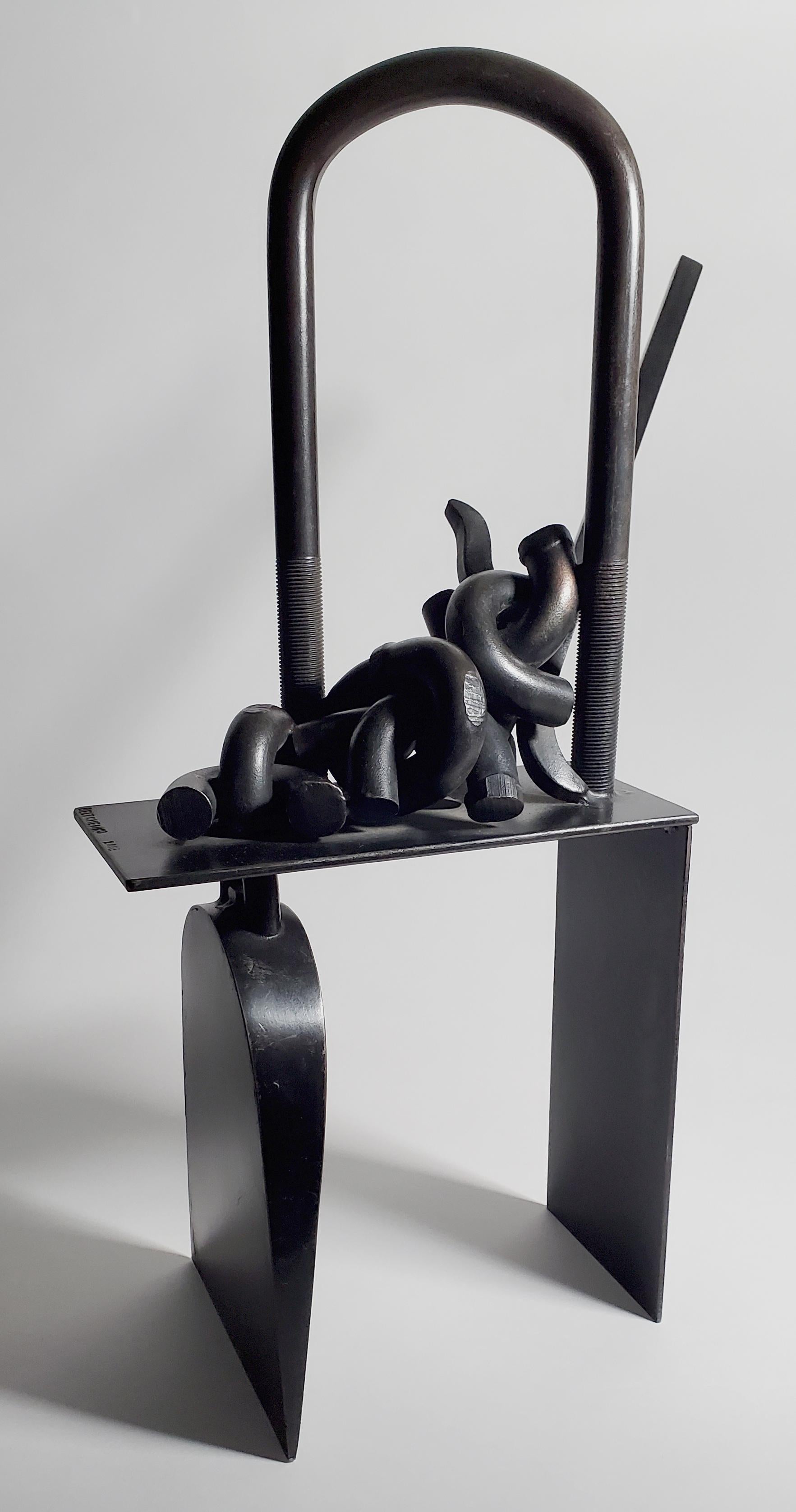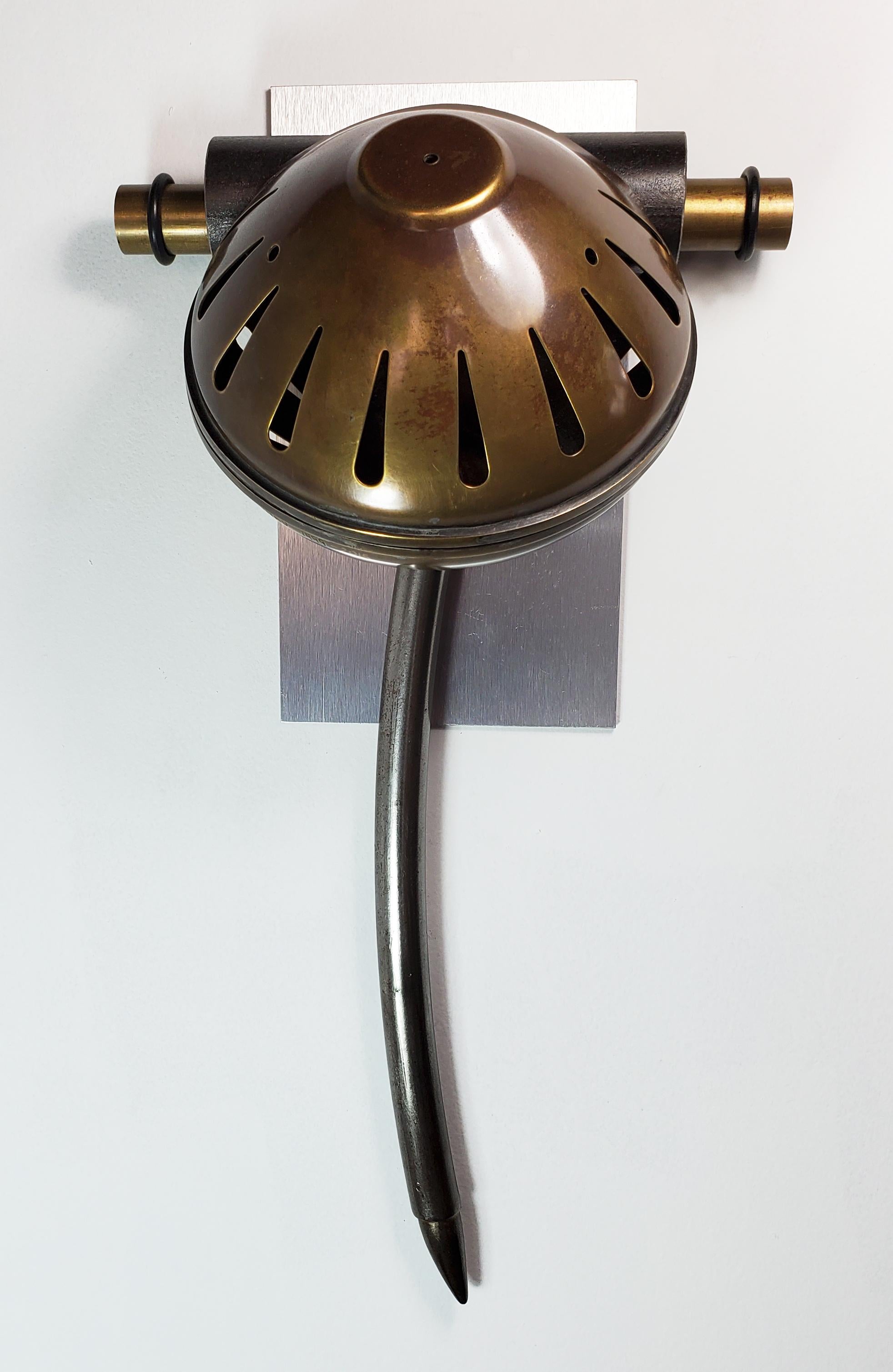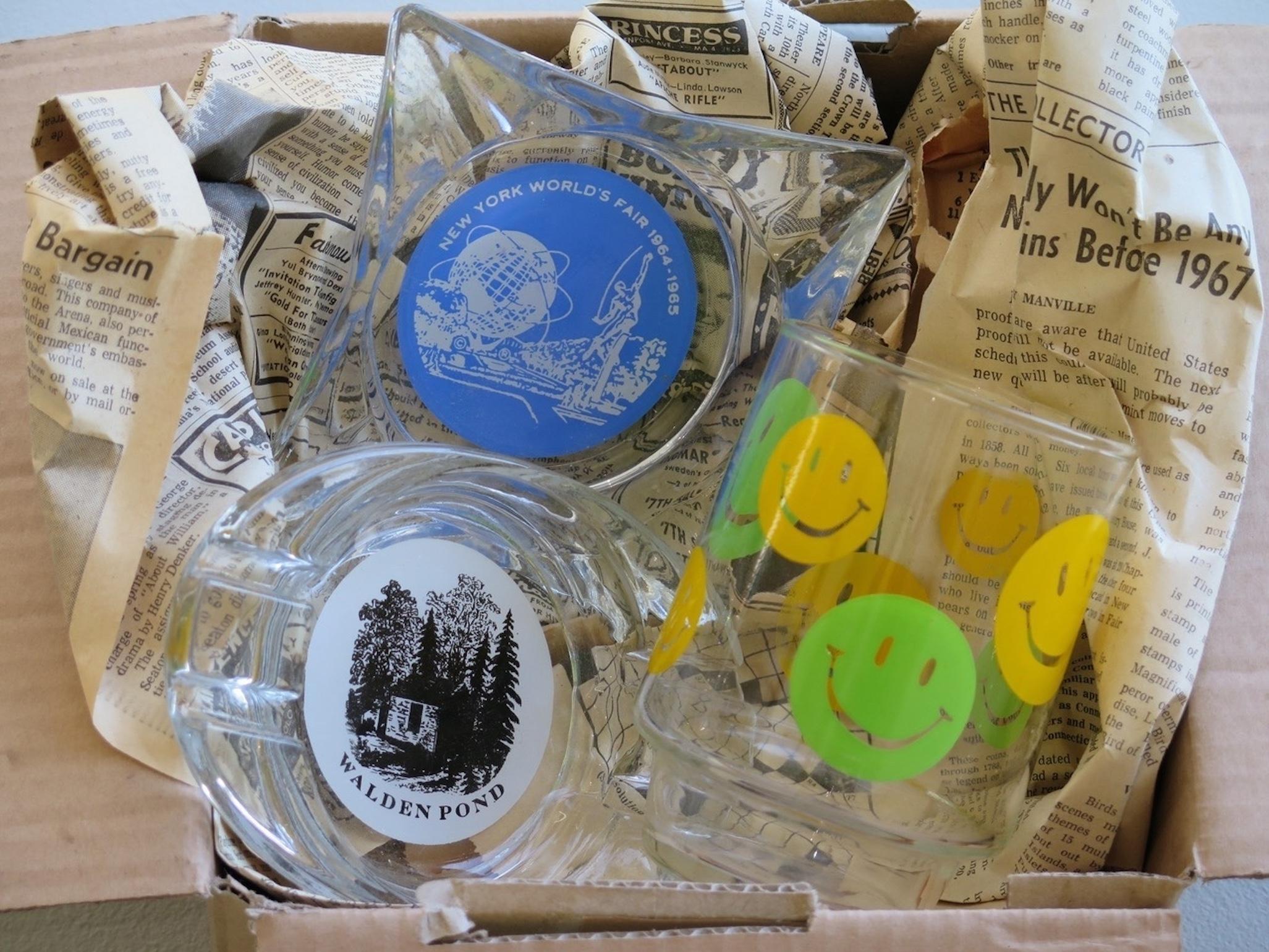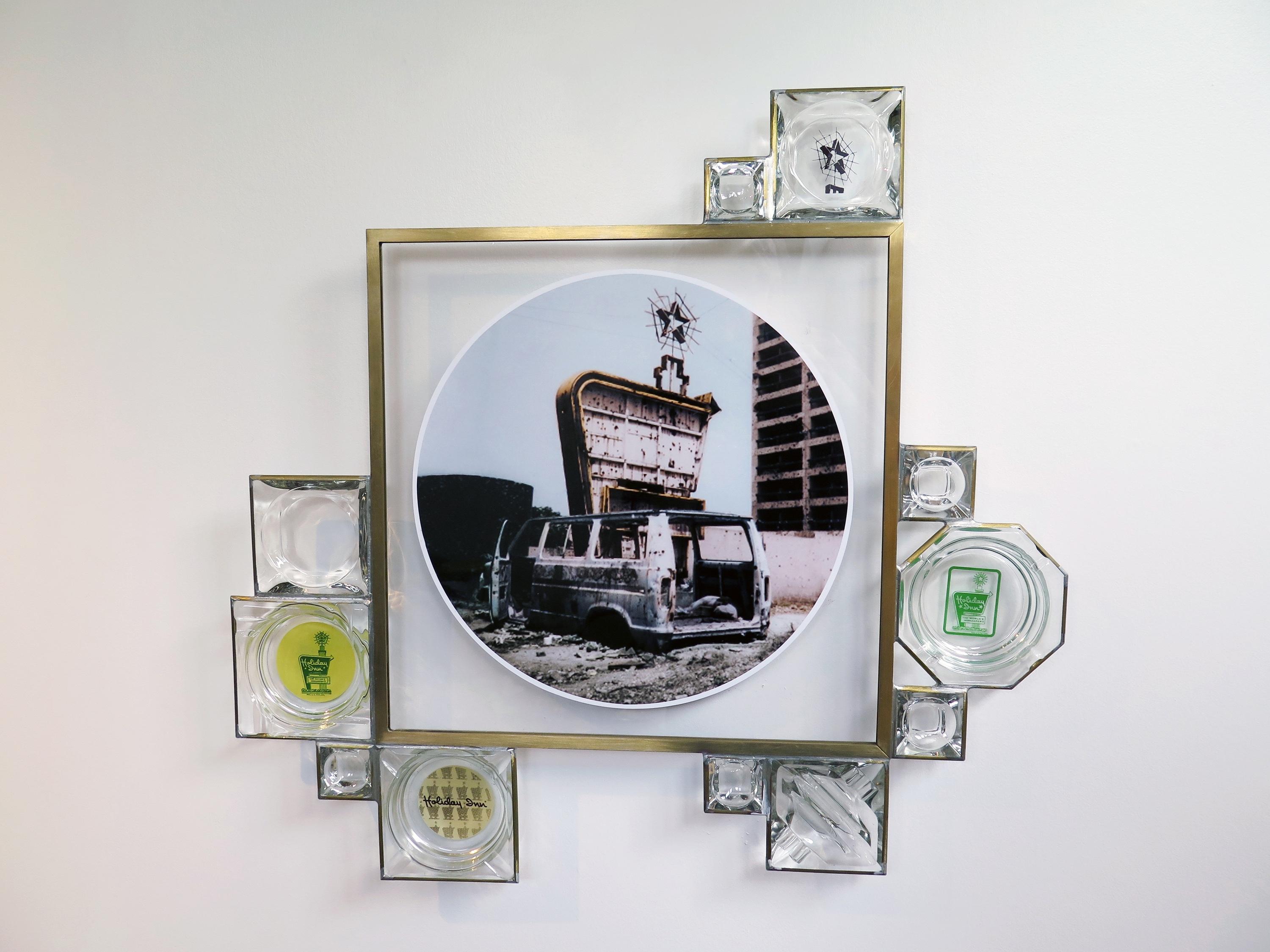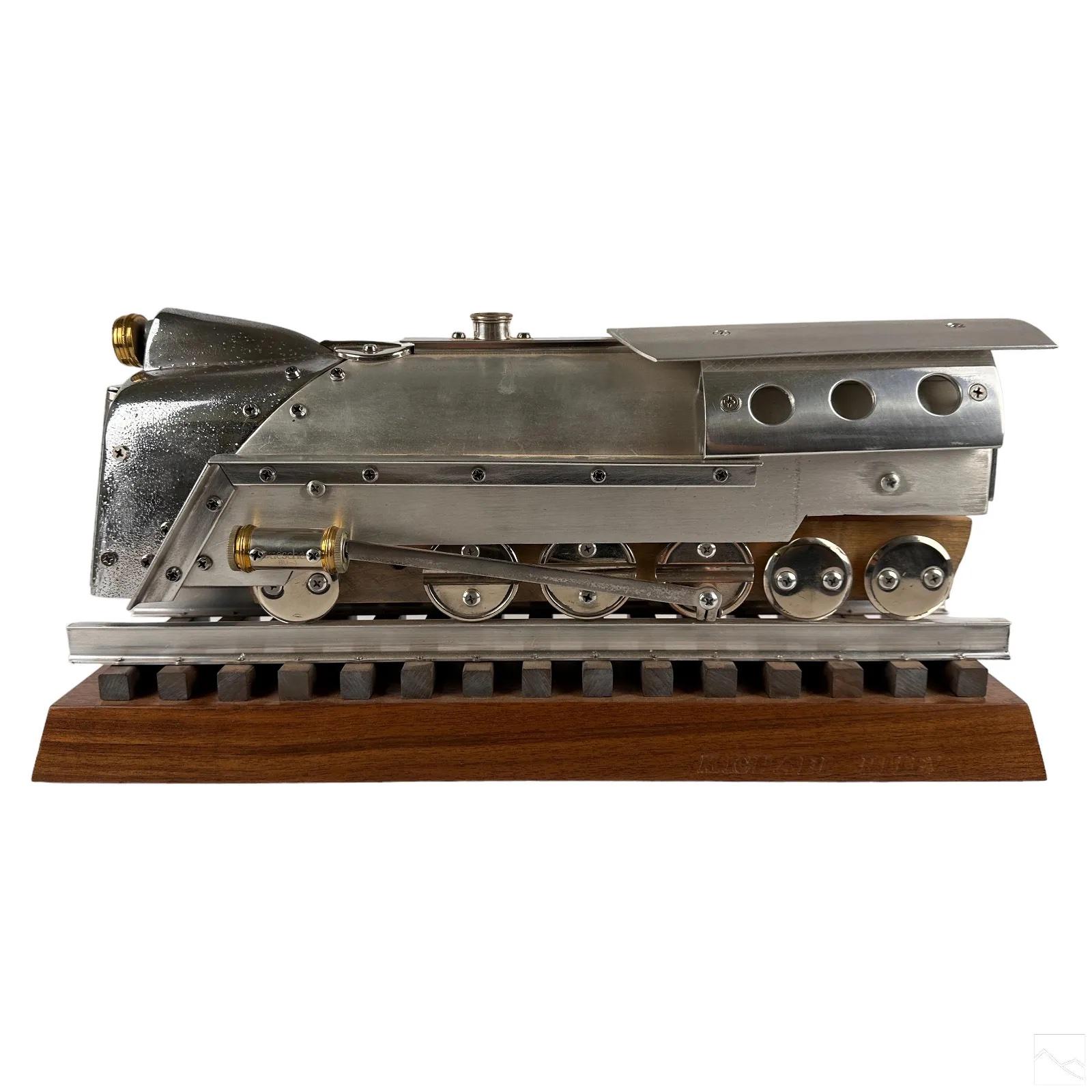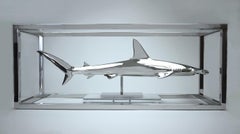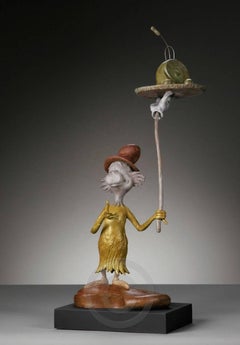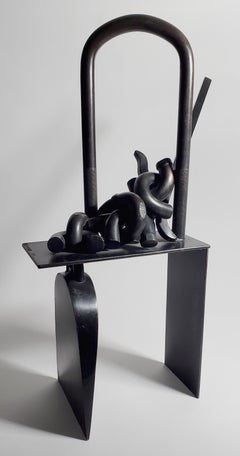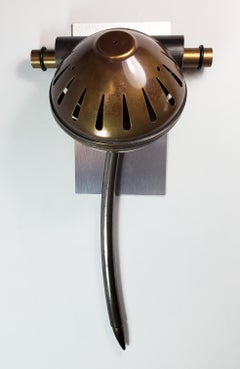
Michael Kalish, Vase
View Similar Items
Michael KalishMichael Kalish, Vase2016
2016
About the Item
- Creator:Michael Kalish (1973, American)
- Creation Year:2016
- Dimensions:Height: 42 in (106.68 cm)Width: 30 in (76.2 cm)Depth: 5.5 in (13.97 cm)
- Medium:
- Movement & Style:
- Period:
- Condition:
- Gallery Location:Miami, FL
- Reference Number:1stDibs: LU57831981483
Michael Kalish
When Michael Kalish reimagines an abused license plate or a vintage fender of a sun-faded farm truck, he transforms these discarded materials into striking art. His works are masterful while endearingly mindful, with a wink to Pop art masters such as Andy Warhol and Roy Lichtenstein. He raises repurposing to a culturally and socially conscious new level.
Kalish was born in Atlanta, Georgia in 1973. He later attended the University of Rhode Island and Kennesaw State University in Georgia, majoring in psychology and minoring in art. After finishing school, he realized that if he wanted a career in art, he would have to do something to stand out. He decided to select a unique medium that would grab the attention of curators and the public.
He stumbled upon an old license plate in a junkyard, which sparked his interest. The color, texture and reflective shine drew him in, and he began to search for more. The first piece he created with the license plates was an American flag, which was exhibited by a small gallery. In 1996, he made a series of license plate portraits of several U.S. presidents, which were displayed in the windows of the Barney’s department store in New York City.
Kalish relocated to Los Angeles, where he continues to work with salvaged metal objects, fashioning them into beautiful roses, bowls of fruit, pop icon portraits and abstract pieces. His Raise the Caliber monumental public work — made of reclaimed guns — garnered high praise for its statement against violence. In 2017, his Art of Finding Love series of interactive abstract sculptures toured various outdoor locations in California.
On 1stDibs, find Michael Kalish’s sculptures, paintings, mixed media and more.
- Michael Kalish, RoseBy Michael KalishLocated in Miami, FLMichael Kalish Rose 2017 48" x 48" Installation sculpture, Aluminum When Michael Kalish combined pop culture and Americana with the object of his fasci...Category
2010s Assemblage Still-life Sculptures
MaterialsMetal
Price Upon Request - Great HammerheadBy Christopher SchulzLocated in Miami, FLChristopher Schulz Great Hammerhead Marine-grade stainless steel Edition of 38Category
2010s Figurative Sculptures
MaterialsStainless Steel
Price Upon Request - Dr. Seuss, Green Eggs and Ham - MaquetteBy (after) Dr. Seuss (Theodore Geisel)Located in Miami, FLDr. Seuss Green Eggs and Ham - Maquette Bronze sculpture 19 x 9 x 8 inches Inspired by Dr. Seuss’s character and created by artist Leo Rijn. Green Eggs an...Category
1990s Figurative Sculptures
MaterialsBronze
Price Upon Request - Solar Mirror 10 by Nicholas BiddleLocated in Miami, FLNicholas Biddle Solar Mirror 10 Acrylic, urethane and pigment Diameter 17 inches (43.2 cm)Category
2010s Abstract Sculptures
MaterialsAcrylic Polymer, Pigment
Price Upon Request - Untitled 218 by Anna Kruhelska - Paper wall sculptureLocated in Miami, FLAnna Kruhelska Untitled 218 Hand-folded, light-resistant and acid-free archival paper Unique wall sculpture framed and ready to hangCategory
2010s Abstract Sculptures
MaterialsArchival Paper
- Untitled 217 by Anna Kruhelska - Paper Wall SculptureLocated in Miami, FLAnna Kruhelska Untitled 217 Hand-folded, light-resistant and acid-free archival paper Unique wall sculpture framed and ready to hangCategory
2010s Abstract Sculptures
MaterialsArchival Paper
- Sculpture created of found and fabricated steel, Titled "Blockade"By Mark Beltchenko StudioLocated in Grosse Pointe Park, MITitle: "Blockade: A Visual Manifestation of Restriction" "Blockade" stands as a compelling contemporary work, a visual manifestation of the concept of keeping someone, something, or ...Category
Early 2000s Assemblage Still-life Sculptures
MaterialsSteel
- I Am King, scepterBy Mark Beltchenko StudioLocated in Grosse Pointe Park, MITitle: "I Am King, scepter: A Regal Ode to Timeless Majesty" "I Am King Scepter" stands as an exquisite wall-mounted sculpture, an assemblage of found and meticulously fabricated ele...Category
2010s Assemblage Still-life Sculptures
MaterialsBrass, Bronze, Steel
- "Guitar" figuratif music mechanism parts assembled 95x34x13 métal rock 2020Located in Roscoff, FRfiguratif sculptures "Guitar"mechanism parts assembled 95x34x13 métal rock music Jean-Pierre Bagnols is an artist who likes to take pieces of objects and give them a second life here he used parts from a motorcycle to create a 70’s...Category
2010s Assemblage Figurative Sculptures
MaterialsMetal, Brass
$1,314 Sale Price20% Off - Richard Klein, iHop II, 2018, Found and altered objects assemblageLocated in Darien, CTIn the mid 1990s Richard Klein started working with found glass objects, including bottles, drinking glasses, ashtrays, and eyeglasses. Initially, Klein rejected any object with commercial or advertising content, but in 2015 he became fascinated with the promotional content that was screen printed on ashtrays from the 1950s, 1960s and early 1970s. This period was before smoking was looked at as being primarily a negative habit, and iconic American businesses, including Howard Johnson’s, International House of Pancakes (iHop) and Holiday Inn, all produced promotional ashtrays printed with their graphic identity. By the time Klein became interested in these objects, the businesses had either ceased to exist, or had changed their logos, and many of their signature buildings, which where examples of classic, “Pop” roadside architecture, has been torn down or repurposed. The artist wanted to connect the glass objects with the business’s sites that were still recognizable and spoke of their history, so he began researching where original buildings still stood. Klein then embarked on a series of road trips to photograph these sites with the intention of combining the photographs with the promotional glass objects. This led him to as far south as Maryland and as far north as upstate New York from his home in Connecticut. In the case of Holiday Inn, it wasn’t their buildings, but their iconic illuminated sign that appeared on ashtrays, so he sought out a standing example of the sign he could photograph. As it turned out all had been removed years before from the hotels' properties and the only working example was indoors at the Henry Ford Museum in Dearborn, Michigan. He did, however, find out that there was one still standing, surprisingly, in Beruit, Lebanon. He found an image of it on the web and used it to make Holiday Inn (Beruit). In 1973 Holiday Inn changed their tagline from “The Nations Innkeeper” to “The World’s Innkeeper” as they expanded overseas, including the Mideast. For the hotel chain it was bad timing: the disastrous Lebanese civil war began in 1975. In the war, the different Lebanese militias involved in the conflict, including the Nasserites, Christian Phalangists, and the Lebanese National Movement engaged in what came to be called “The Battle of the Hotels” where they each occupied a major high-rise hotel in central Beruit. The Phalangists commanded the Holiday Inn, which they used to fire with both light arms and heavier weapons at the militias in neighboring hotels. Klein used the photo of the heavily damaged Holiday Inn sign as I thought it spoke in a curious, offhanded way about American cultural imperialism in juxtaposition with an ashtray that proclaimed Holiday Inn to be “The World’s Innkeeper.” In the work Holiday Inn (Nocturne) the artist utilized a found, 35mm slide of a Holiday Inn sign at night at an unknown location as the basis of the photograph in the work. Richard Klein is a Connecticut-based artist, independent curator and writer. As an artist, he has exhibited widely, including the Neuberger Museum of Art at SUNY Purchase; Caren Golden Fine Art, New York; the John Michael Kohler Arts Center, Sheboygan, WI; Hales Gallery, London; Gavlak Gallery, Palm Beach, FL; deCordova Sculpture Park and Museum, Lincoln, MA; James Barron Art, Kent, CT; The Portland Institute of Contemporary Art (PICA), Portland, OR; Schoolhouse Gallery, Provincetown, MA; Stephan Stoyanov Gallery, NY; Katonah Museum of Art, Katonah, NY; Brattleboro Museum and Art Center, Brattleboro, VT; Ortega y Gasset Projects, Brooklyn, NY; Exhibit by Alberson Tulsa, OK; Incident Report/Flow Chart Foundation, Hudson, NY; ICEHOUSE Project Space, Sharon, CT; Kenise Barnes Fine Art in Kent, CT and with ODETTA Gallery at the Equity Gallery in New York City.. Reviews of his work have appeared in Two Coats of Paint, Whitehot Magazine, The New York Times, Sculpture Magazine, Art in America, and The New Yorker. In the summer of 2024 he will be the first Artist-In-Residence at Peck Ledge Light...Category
2010s Assemblage Still-life Sculptures
MaterialsMetal
- Richard Klein, Holiday Inn Beirut, 2017, Found and altered objects assemblageLocated in Darien, CTIn the mid 1990s Richard Klein started working with found glass objects, including bottles, drinking glasses, ashtrays, and eyeglasses. Initially, Klein rejected any object with commercial or advertising content, but in 2015 he became fascinated with the promotional content that was screen printed on ashtrays from the 1950s, 1960s and early 1970s. This period was before smoking was looked at as being primarily a negative habit, and iconic American businesses, including Howard Johnson’s, International House of Pancakes (iHop) and Holiday Inn, all produced promotional ashtrays printed with their graphic identity. By the time Klein became interested in these objects, the businesses had either ceased to exist, or had changed their logos, and many of their signature buildings, which where examples of classic, “Pop” roadside architecture, has been torn down or repurposed. The artist wanted to connect the glass objects with the business’s sites that were still recognizable and spoke of their history, so he began researching where original buildings still stood. Klein then embarked on a series of road trips to photograph these sites with the intention of combining the photographs with the promotional glass objects. This led him to as far south as Maryland and as far north as upstate New York from his home in Connecticut. In the case of Holiday Inn, it wasn’t their buildings, but their iconic illuminated sign that appeared on ashtrays, so he sought out a standing example of the sign he could photograph. As it turned out all had been removed years before from the hotels' properties and the only working example was indoors at the Henry Ford Museum in Dearborn, Michigan. He did, however, find out that there was one still standing, surprisingly, in Beruit, Lebanon. He found an image of it on the web and used it to make Holiday Inn (Beruit). In 1973 Holiday Inn changed their tagline from “The Nations Innkeeper” to “The World’s Innkeeper” as they expanded overseas, including the Mideast. For the hotel chain it was bad timing: the disastrous Lebanese civil war began in 1975. In the war, the different Lebanese militias involved in the conflict, including the Nasserites, Christian Phalangists, and the Lebanese National Movement engaged in what came to be called “The Battle of the Hotels” where they each occupied a major high-rise hotel in central Beruit. The Phalangists commanded the Holiday Inn, which they used to fire with both light arms and heavier weapons at the militias in neighboring hotels. Klein used the photo of the heavily damaged Holiday Inn sign as I thought it spoke in a curious, offhanded way about American cultural imperialism in juxtaposition with an ashtray that proclaimed Holiday Inn to be “The World’s Innkeeper.” In the work Holiday Inn (Nocturne) the artist utilized a found, 35mm slide of a Holiday Inn sign at night at an unknown location as the basis of the photograph in the work. Richard Klein is a Connecticut-based artist, independent curator and writer. As an artist, he has exhibited widely, including the Neuberger Museum of Art at SUNY Purchase; Caren Golden Fine Art, New York; the John Michael Kohler Arts Center, Sheboygan, WI; Hales Gallery, London; Gavlak Gallery, Palm Beach, FL; deCordova Sculpture Park and Museum, Lincoln, MA; James Barron Art, Kent, CT; The Portland Institute of Contemporary Art (PICA), Portland, OR; Schoolhouse Gallery, Provincetown, MA; Stephan Stoyanov Gallery, NY; Katonah Museum of Art, Katonah, NY; Brattleboro Museum and Art Center, Brattleboro, VT; Ortega y Gasset Projects, Brooklyn, NY; Exhibit by Alberson Tulsa, OK; Incident Report/Flow Chart Foundation, Hudson, NY; ICEHOUSE Project Space, Sharon, CT; Kenise Barnes Fine Art in Kent, CT and with ODETTA Gallery at the Equity Gallery in New York City.. Reviews of his work have appeared in Two Coats of Paint, Whitehot Magazine, The New York Times, Sculpture Magazine, Art in America, and The New Yorker. In the summer of 2024 he will be the first Artist-In-Residence at Peck Ledge Light...Category
2010s Assemblage Still-life Sculptures
MaterialsMetal
- Richard Klein, Expo 67, 2017, Found and altered objects assemblageLocated in Darien, CTIn the mid 1990s Richard Klein started working with found glass objects, including bottles, drinking glasses, ashtrays, and eyeglasses. Initially, Klein rejected any object with commercial or advertising content, but in 2015 he became fascinated with the promotional content that was screen printed on ashtrays from the 1950s, 1960s and early 1970s. This period was before smoking was looked at as being primarily a negative habit, and iconic American businesses, including Howard Johnson’s, International House of Pancakes (iHop) and Holiday Inn, all produced promotional ashtrays printed with their graphic identity. By the time Klein became interested in these objects, the businesses had either ceased to exist, or had changed their logos, and many of their signature buildings, which where examples of classic, “Pop” roadside architecture, has been torn down or repurposed. The artist wanted to connect the glass objects with the business’s sites that were still recognizable and spoke of their history, so he began researching where original buildings still stood. Klein then embarked on a series of road trips to photograph these sites with the intention of combining the photographs with the promotional glass objects. This led him to as far south as Maryland and as far north as upstate New York from his home in Connecticut. In the case of Holiday Inn, it wasn’t their buildings, but their iconic illuminated sign that appeared on ashtrays, so he sought out a standing example of the sign he could photograph. As it turned out all had been removed years before from the hotels' properties and the only working example was indoors at the Henry Ford Museum in Dearborn, Michigan. He did, however, find out that there was one still standing, surprisingly, in Beruit, Lebanon. He found an image of it on the web and used it to make Holiday Inn (Beruit). In 1973 Holiday Inn changed their tagline from “The Nations Innkeeper” to “The World’s Innkeeper” as they expanded overseas, including the Mideast. For the hotel chain it was bad timing: the disastrous Lebanese civil war began in 1975. In the war, the different Lebanese militias involved in the conflict, including the Nasserites, Christian Phalangists, and the Lebanese National Movement engaged in what came to be called “The Battle of the Hotels” where they each occupied a major high-rise hotel in central Beruit. The Phalangists commanded the Holiday Inn, which they used to fire with both light arms and heavier weapons at the militias in neighboring hotels. Klein used the photo of the heavily damaged Holiday Inn sign as I thought it spoke in a curious, offhanded way about American cultural imperialism in juxtaposition with an ashtray that proclaimed Holiday Inn to be “The World’s Innkeeper.” In the work Holiday Inn (Nocturne) the artist utilized a found, 35mm slide of a Holiday Inn sign at night at an unknown location as the basis of the photograph in the work. Richard Klein is a Connecticut-based artist, independent curator and writer. As an artist, he has exhibited widely, including the Neuberger Museum of Art at SUNY Purchase; Caren Golden Fine Art, New York; the John Michael Kohler Arts Center, Sheboygan, WI; Hales Gallery, London; Gavlak Gallery, Palm Beach, FL; deCordova Sculpture Park and Museum, Lincoln, MA; James Barron Art, Kent, CT; The Portland Institute of Contemporary Art (PICA), Portland, OR; Schoolhouse Gallery, Provincetown, MA; Stephan Stoyanov Gallery, NY; Katonah Museum of Art, Katonah, NY; Brattleboro Museum and Art Center, Brattleboro, VT; Ortega y Gasset Projects, Brooklyn, NY; Exhibit by Alberson Tulsa, OK; Incident Report/Flow Chart Foundation, Hudson, NY; ICEHOUSE Project Space, Sharon, CT; Kenise Barnes Fine Art in Kent, CT and with ODETTA Gallery at the Equity Gallery in New York City.. Reviews of his work have appeared in Two Coats of Paint, Whitehot Magazine, The New York Times, Sculpture Magazine, Art in America, and The New Yorker. In the summer of 2024 he will be the first Artist-In-Residence at Peck Ledge Light...Category
2010s Assemblage Still-life Sculptures
MaterialsMetal
